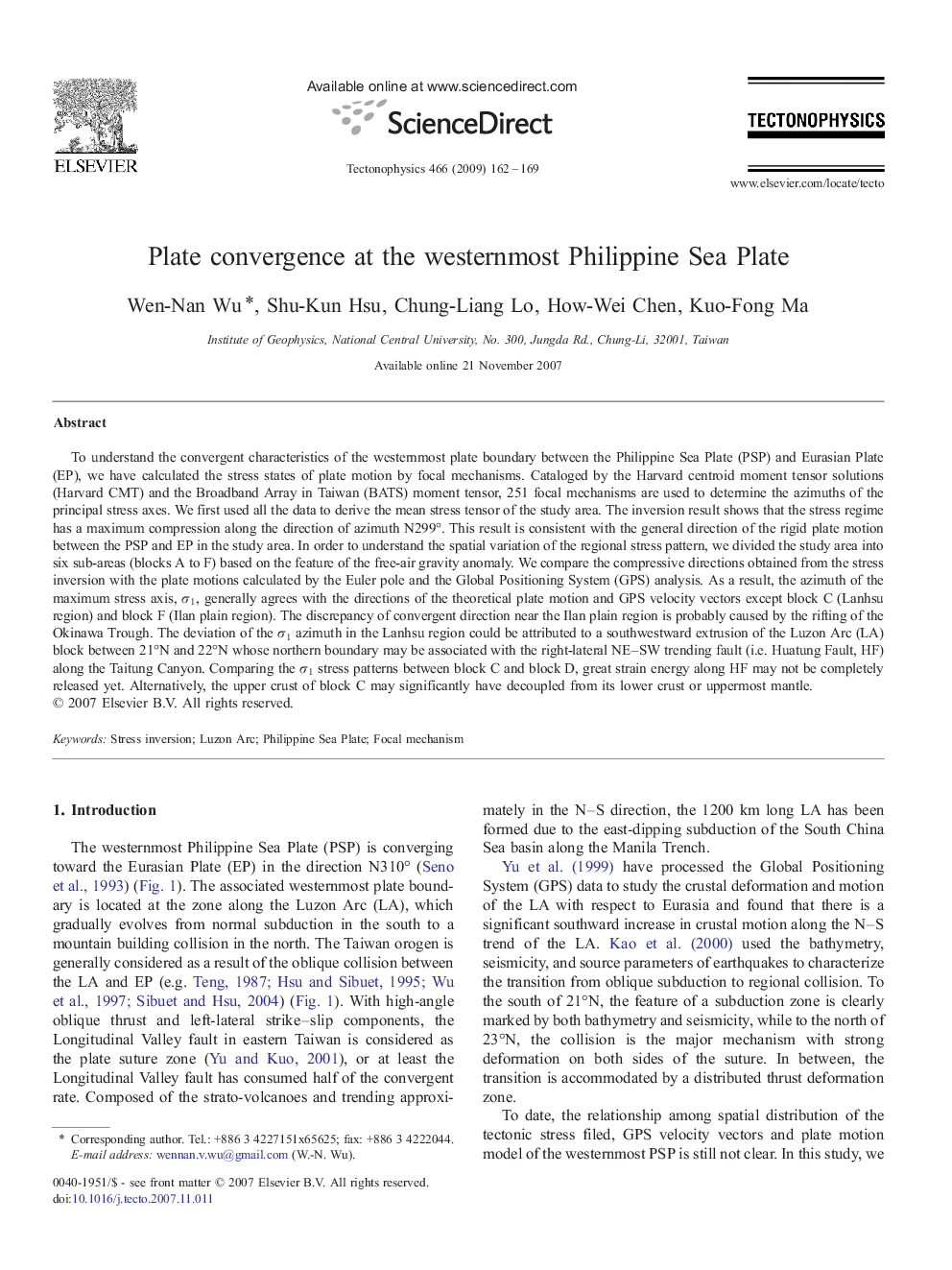| کد مقاله | کد نشریه | سال انتشار | مقاله انگلیسی | نسخه تمام متن |
|---|---|---|---|---|
| 4694245 | 1636898 | 2009 | 8 صفحه PDF | دانلود رایگان |

To understand the convergent characteristics of the westernmost plate boundary between the Philippine Sea Plate (PSP) and Eurasian Plate (EP), we have calculated the stress states of plate motion by focal mechanisms. Cataloged by the Harvard centroid moment tensor solutions (Harvard CMT) and the Broadband Array in Taiwan (BATS) moment tensor, 251 focal mechanisms are used to determine the azimuths of the principal stress axes. We first used all the data to derive the mean stress tensor of the study area. The inversion result shows that the stress regime has a maximum compression along the direction of azimuth N299°. This result is consistent with the general direction of the rigid plate motion between the PSP and EP in the study area. In order to understand the spatial variation of the regional stress pattern, we divided the study area into six sub-areas (blocks A to F) based on the feature of the free-air gravity anomaly. We compare the compressive directions obtained from the stress inversion with the plate motions calculated by the Euler pole and the Global Positioning System (GPS) analysis. As a result, the azimuth of the maximum stress axis, σ1, generally agrees with the directions of the theoretical plate motion and GPS velocity vectors except block C (Lanhsu region) and block F (Ilan plain region). The discrepancy of convergent direction near the Ilan plain region is probably caused by the rifting of the Okinawa Trough. The deviation of the σ1 azimuth in the Lanhsu region could be attributed to a southwestward extrusion of the Luzon Arc (LA) block between 21°N and 22°N whose northern boundary may be associated with the right-lateral NE–SW trending fault (i.e. Huatung Fault, HF) along the Taitung Canyon. Comparing the σ1 stress patterns between block C and block D, great strain energy along HF may not be completely released yet. Alternatively, the upper crust of block C may significantly have decoupled from its lower crust or uppermost mantle.
Journal: Tectonophysics - Volume 466, Issues 3–4, 10 March 2009, Pages 162–169